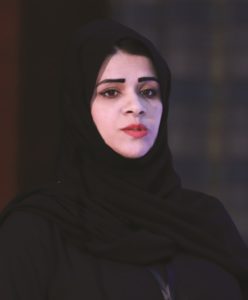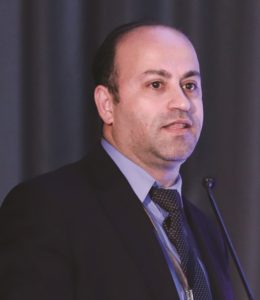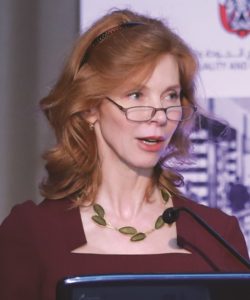The 4th edition of the World IEQ Forum underscored the critical role the public sector plays in achieving indoor environmental quality targets, through presentations and addresses delivered by leaders and representatives from various government agencies, as well as a discussion on IEQ-related standards and regulations. We bring you the first of our two-part coverage of the Forum.

The work required to develop the tools for the improvement of indoor air quality (IAQ) is a shared responsibility. Relaying this view while delivering the keynote address at the 4th edition of the World IEQ Forum, on October 26 in Dubai, H.E. Dr Thani Ahmed Al Zeyoudi, UAE Minister of Climate Change and Environment, emphasised the need for government entities and the private sector to play their part in promoting better IAQ. “I call on those responsible for closed places, especially residential and commercial buildings, to pay more attention to IAQ and to commit to adopt best practices in dealing with IAQ issues, as well as employ the best innovative tools and solutions in this regard,” he said.
Informing those in attendance at the Forum of how the Ministry is going about fulfilling its part to advance the cause of IAQ, Al Zeyoudi revealed that while efforts have mostly gone into outdoor air quality, the country can expect to see “greater focus on the development and implementation of a set of plans and projects related to IAQ”, which he said will “coincide with the implementation of a set of approved national strategies, such as the UAE Strategy for Green Development”.
He also noted that Green Cities represent one of the main pillars of the strategy, “where making houses and buildings more environmentally efficient and developing policies to improve IAQ for cities are key elements”.
On the topic of technological innovations, he pointed out that the country will benefit from the National Strategy for Innovation, launched in 2014 by H.H. Sheikh Mohammed bin Rashid Al Maktoum, Vice President and Prime Minister of the UAE and Ruler of Dubai. “In this context,” he said, “I want to highlight the Ajwa’a application, which the Ministry launched during GITEX, as an innovative application designed to monitor air quality inside buildings and to alert residents when the concentration of air pollutants, including noise, temperature and humidity, exceed safe levels.”
We have several KPIs, but the main one we are working on is cross-sector collaboration to monitor, identify and mitigate existing potential sources of air pollution – both indoor and outdoor
An integrated approach
Later, while giving a plenary address, Engr Aisha Alabdooli, Director of Air Quality Department at the UAE Ministry of Climate Change, expanded on the Minister’s statements regarding government policies and projects, sharing that the UAE has adopted an integrated approach to achieving better air quality. Elaborating, she said that through Vision 2021, the UAE has identified air quality as a national priority, and air quality level as one of 52 key performance indicators for sustainable development. “We have specific targets to be reached by 2021,” she said. “Action plans are already in place, and we are confident that we will reach those targets by collaborating with different stakeholders.”
To give an example of a collaborative effort that the Ministry is pursuing, she made mention of a project with Masdar Institute involving the monitoring and surveillance of air quality with the use of satellite, as well as offered details about the UAE’s air quality network, saying: “We have 41 stations scattered across the UAE, and all of them are connected to a network. This network is important, because it collects data from all the stations, making the information available to the decision-makers and technical people responsible for – and capable of – tracking the progress that is happening in every station.”
While acknowledging – like H.E. Dr Al Zeyoudi did before her – that most of the Ministry’s current projects are focused on outdoor air quality, Alabdooli stressed that the government is cognisant of the need for IAQ-centric initiatives and is working towards developing relevant legislation and programmes. She admitted, however, that lack of IAQ data is a challenge.
“What do we need to do to improve air quality?” she asked. “I’m sure that you agree with me that we have very little data available about IAQ – the current level of it and the sources of indoor air pollution. So, we need to start with setting a baseline by implementing proper monitoring mechanisms, before creating effective performance targets. Eventually, we will have a new framework that can help owners and occupants take into account IAQ, when they make their choice of buildings. Buildings with the proper IAQ status should have more demand, which will, naturally, motivate the building sector to invest more in improving IAQ.”
Qatari perspective
Also delivering a plenary address at the Forum was Sheikh Dr Mohammed Bin Hamad Bin J Al-Thani, Director of Public Health at the Supreme Council of Health in the State of Qatar, who talked about the schemes, projects and policies that have been undertaken or are being undertaken in his country in relation to indoor environments. Giving particular focus to the country’s objectives in terms of public health, he said: “We have several KPIs, but the main one we are working on is cross-sector collaboration to monitor, identify and mitigate existing potential sources of air pollution – both indoor and outdoor.”
Sometimes, we are in a limbo, because when things are not good but not so bad either, people don’t want to exert much effort into achieving change
Sheikh Dr Al-Thani, bringing up the climatic conditions in his country, added: “Qatar is located in an arid region, so we have high humidity and a lot of dust. But we are committed to maintaining high standards in health, safety and the environment, especially now that the construction industry is booming. We are making air quality a priority and looking at different technologies.”
Despite the attention that air quality is reportedly now receiving in Qatar and the rest of the Gulf, awareness remains a challenge that needs to be addressed, said Sheikh Dr Al-Thani. “What kind of discussion is happening now in the region?” he asked. “We have a huge challenge in making people understand and believe that poor air quality is dangerous. They’ll tell you that the number of deaths attributed to poor air quality is not so high. So what can we do? Sometimes, we are in a limbo, because when things are not good but not so bad either, people don’t want to exert much effort into achieving change. They think, ‘Why do we need to do more when things are not so bad?’ And that is the challenge that we are facing as we try to move forward together.”
Regulating IEQ
In addition to the addresses from H.E. Dr Al Zeyoudi, Alabdooli and Sheikh Dr Al-Thani, the first session of the World IEQ Forum featured special presentations* from Engr Taher Diab, Senior Director – Strategy and Planning/Secretary General-EEA, Dubai Supreme Council of Energy; Engr Nawal Al Hanaei, Director of Technical and Land Affairs and Head of Building Section, Fujairah Municipality; Engr Yaser Omar Kayed, Head of Studies and Planning Unit Environmental Protection Section, Ajman Municipality and Planning Department; Dr Simon Hugh Miller, Product Conformity Specialist, Abu Dhabi Quality and Conformity Council (QCC); and Dr. P.R. Jagannathan, Manager – Sustainability, Trakhees, whose policy presentation focused on the subject of Green Building regulatory framework.
Diab touched on the government’s role in pioneering energy efficiency and sustainability, and how it can influence consumer behaviour and create market for green growth. Al Hanaei, on the other hand, gave the delegates a glimpse into Fujairah’s green pathway in buildings across the emirate, and the attention it has accorded to good IEQ. Kayed, for his part, shared details about a project he and his team have been working on involving the survey and monitoring of shisha cafés in Ajman, as part of efforts to ensure that good IAQ is maintained in said establishments. Miller’s presentation, meanwhile, spelled out how QCC goes about making certain that products meet the standards set by the Abu Dhabi government.
[div class=”row”]
[div class=”col-md-10 col-md-offset-1 content-sidebox” style=”background-color: #696969; color: #FFFFFF; “]
Moderated by Holley Chant, Executive Director for Corporate Sustainability at KEO Consultants, the plenary discussion saw speakers from the public sector share their thoughts on, among other issues, smoking-related building codes, the feasibility of developing an “IEQ Map” and collaboration opportunities among government agencies. Excerpts…

Sheikh Dr Mohammed Bin Hamad Bin J Al-Thani
Sheikh Dr Mohammed Bin Hamad Bin J Al-Thani: In Qatar, owing to the upcoming World Cup, many people are talking about health occupational hazards for labourers. So, we are paying attention to occupational health.
We are also looking at environmental health, including indoor air quality. We are trying to convince all stakeholders that we need to invest more in the environment. But this needs a lot of effort and collaboration, because it doesn’t only involve one organisation. The Ministry of Environment, the Ministry of Health and the municipality have to work together.
Holley Chant: Could you share with us an instance when you felt there’s been success in achieving engagement across silos in governments?
Dr Muhammad Wasif Alam (Director, Public Health and Safety Department, Dubai Health Authority): When I was working in the occupational health sector in Qatar [from 2007 to 2012], we worked closely with stakeholders, like the oil and gas sector and other big industries, as well as with small and medium businesses. Our collaboration was very effective, meaning that we would sit down together and assist one another in developing strategies and policies.
Chant: One of the mandates of the Abu Dhabi Quality and Conformity Council, if I understand it correctly, is to harmonise across the entire Abu Dhabi government.

Dr Simon Hugh Miller
Dr Simon Hugh Miller: QCC is a council of regulators. We have as our primary stakeholders most of the main regulators when it comes to public health – the Health Authority [Abu Dhabi], the Environment Agency, the Urban Planning Council, the Department of Municipal Affairs. So we do have a lot of regulators on the board.
The next level is, obviously, the industry, when it comes to primary stakeholders in construction and development, which have an impact on air quality. Next to this are testing and certification, as well as public feedback.
When we look to harmonise across standards, we strive to involve all of those groups. Together, they would make the ultimate team that can develop harmonised standards, but I think we have to think in broader terms when it comes to air quality, both outdoor and indoor, because this is something that affects all of the UAE in a similar way. We have similar environmental conditions and we have similar challenges when it comes to air quality. We build buildings with the same products, from the same manufacturers, and we have the same companies doing the commissioning and the quality monitoring. So, really, to develop harmonised standards and to have them utilised efficiently within the UAE, we need to think on a UAE level and incorporate feedback not just from Abu Dhabi but also from the other emirates.
Chant: Engr Nawal, Dr Simon was touching on the importance of, to paraphrase, sharing data across the country. Do you think there would be a place for an “IEQ Map”? Dubai, for example, is working on an energy intensity map. Could we have an IEQ Map, where we can look across the country and see these hot spots? Would it be a viable idea?

Engr Nawal Al Hanaei
Engr Nawal Al Hanaei: It could happen, but it should incorporate all stakeholders and not only one entity. Like what Dr Simon said, we have to engage the environmental agencies, the health sectors and the municipality, as well as the local and federal agencies. If the Ministry of Climate Change were to take this initiative, we would support it as a local agency and authority.
Chant: Engr Yaser, when you were doing your research about shisha cafés, did you incorporate the maintenance of systems in your questionnaire? I know you asked [the proprietors] about the HVAC systems in their establishments, but did you ask them how they maintained those systems?

Engr Yaser Omar Kayed
Engr Yaser Omar Kayed: We did incorporate maintenance into the questionnaire, because we recognise that without proper maintenance, having the right systems in place would not be enough. However, our analysis on that part of the questionnaire has not been completed yet, and so I can’t just yet share the results.
Chant: Dr P.R. [Jagannathan], many Green Building regulations have a directive in them that discourages smoking. The WELL Building Standard, for example, has it. In your opinion, how feasible is it to implement a non-smoking policy in buildings?
Dr P.R. Jagannathan: It’s actually impossible to completely ban smoking, but the regulations should make sure that smoking or passive smoking does not affect the occupants. So our regulation insists on separate smoking areas, at specific distances from the main entrance of buildings. When it comes to flats or residential buildings, however, it is the individual’s choice whether to smoke, but the regulations demand that there is an envelope-tightness test undertaken on a random basis to ensure that smoke does not find its way to the common areas.
With LEED, a door blower test is prescribed to check the tightness or the integrity of the apartments and the features that separate the common areas from the occupied areas.
Chant: When you say you believe it’s impossible to ban smoking, is that for cultural reasons?

Dr P.R. Jagannathan
Jagannathan: Let me rephrase my earlier statement. I was actually referring to residential buildings. In offices, it’s quite possible. In fact, most of our clients based in JAFZA issue a letter to us, saying that their buildings are strictly no-smoking, and that is what’s practised in almost all official buildings and any other built-environment other than residences. So a ban is possible.
I also want to comment on your earlier question about having an IEQ Map. When we talk of EUI, or energy usage intensity in buildings across the city, we’re talking of one value that is quantity – kWh per square metre, irrespective of the source of power, be it electrical or water. But when we talk of indoor air quality, we are trying to quantify a qualitative figure. IAQ could be a mix of several things, like Legionella, spores, VOCs, CO2 and CO. Luckily, despite IAQ being complex, it’s quite easy to control through proper design and behaviour. Hence, in my view, developing an index for IAQ would be an extremely complex undertaking.

Holley Chant
Chant: I think that it would indeed be complex to have an index. I think it would end up being a pie chart that, ideally, would quantify each of the elements of IEQ that we’re particularly at risk. But for the sake of public health, and if we start with the baseline challenge of PM, I think that any awareness we can bring to IEQ is really critical. Perhaps something as flashy as an IEQ Map would ultimately be too challenging, but I think if we make our citizenry aware of the issue, the market would then demand change. Yes, it must start with the government, but the private sector also needs to provide support. The fact that we now have something like the WELL Building Standard shows that these things develop, because the market began to demand, and I really believe that that is the core of what comes next, behind all the great expertise that we see today.
[end-div]
[end-div]
*Speaker presentations can be accessed at http://www.cpi-industry.com/events/ieq/post-event/
[The writer is the Assistant Editor of Climate control Middle East.]
Copyright © 2006-2025 - CPI Industry. All rights reserved.